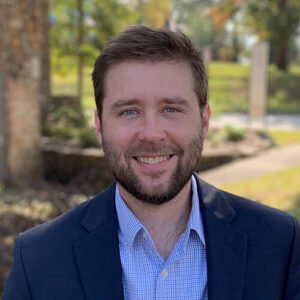Latest update made on October 10, 2025
The federal student loan landscape is undergoing significant transformations in 2025 with changes and proposals that directly affect doctors, especially those involved in public service.
Below we take a look at proposed and actual changes and how they may impact doctors and doctors-in-training. This article will be updated regularly as changes or new proposals are made.
By proactively engaging with these updates, doctors can better navigate the evolving federal student loan environment and make informed decisions about their loan repayment strategies.
October 10, 2025
Government Shutdown Could Delay IDR & PSLF Processing
The ongoing federal government shutdown, which began October 1, has added new uncertainty for student loan borrowers — especially those enrolled in income-driven repayment (IDR) plans or pursuing Public Service Loan Forgiveness (PSLF). While loan payments and disbursements continue, the Department of Education is operating with limited staff under its contingency plan. This reduction is likely to slow or temporarily halt the processing of PSLF applications, IDR recertifications, and forgiveness approvals. Borrowers reaching key milestones, such as completing 120 qualifying PSLF payments or submitting employer certification forms, may experience delays until normal operations resume.
Customer service response times and paperwork processing are already being affected, compounding existing backlogs in PSLF and IDR reviews. While borrowers must still make payments as scheduled, administrative actions, such as confirming PSLF eligibility or updating income information, may not move forward until the shutdown ends. For doctors and other professionals relying on PSLF, this pause could delay credit toward forgiveness and extend repayment timelines.
Takeaways: Continue making payments to stay in good standing, document all submissions and communications, and monitor updates from the Department of Education and your loan servicer. Processing will resume once federal operations are fully restored, but expect delays in approvals and communication during the shutdown.
August 6, 2025
Interest Resumes for Borrowers in the SAVE Plan
As of August 1, 2025, borrowers enrolled in the federal SAVE income-driven repayment plan began accruing interest again. This ended a key benefit of the plan, which had previously prevented unpaid interest from growing borrowers’ balances. The change could result in higher total repayment costs—especially for medical, dental, and veterinary professionals in training or early in their careers.
This development comes as broader changes to federal loan programs loom, with the SAVE plan set to be replaced entirely under the new “One Big Beautiful Bill Act.”
Takeaways: Borrowers should review their current repayment strategy and prepare for upcoming shifts in federal student loan policy.
July 9, 2025
Major Changes to Student Loans Signed into Law
On July 4, 2025, President Trump signed the “One Big Beautiful Bill Act” into law, enacting sweeping changes to federal student loan programs. The law will impact how medical, dental, and veterinary students finance their education and how doctors repay their loans, especially those pursuing careers in public service or nonprofit medicine. Here’s a roundup of the official changes:
- Elimination of Graduate PLUS loans beginning July 1, 2026. This would remove a primary source of federal funding for many graduate and professional students, including those pursuing MD, DO, DDS, DMD, and other clinical degrees. Instead, students would be limited to $50,000 annually in unsubsidized Stafford loans, with lifetime caps of $100,000 for master’s degrees and $200,000 for professional degrees.
- Residency and fellowship years excluded from Public Service Loan Forgiveness (PSLF) credit. Although physicians, dentists, and veterinarians working for qualifying nonprofits or public hospitals may still pursue PSLF after training, time spent in residency or fellowship would no longer count toward the required 120 monthly payments.
- Post-training PSLF eligibility remains intact. Doctors working in nonprofit or public service roles after residency could still qualify for forgiveness after 10 years of repayment, but with no PSLF credit for the 3–7 years spent in post-graduate training, the timeline to forgiveness would be significantly extended.
- SAVE and other income-driven repayment plans eliminated. The new law replaces existing plans—including SAVE, PAYE, and IBR—with a single Repayment Assistance Plan (RAP). While RAP is income-driven, it does not cap monthly payments, and borrowers will no longer benefit from SAVE’s interest subsidies.
- Interest accrual resumes under the SAVE plan on August 1, 2025. Borrowers currently enrolled in SAVE will begin accruing interest again, potentially increasing their total repayment amount even before RAP replaces the plan.
Takeaways: Doctors in training and early-career professionals should re-evaluate their borrowing strategies, prepare for increased private debt, and reassess their PSLF plans in light of the new law.
July 2, 2025
Senate Passes Revised Bill Slashing Grad PLUS Loans, Changing PSLF Rules
The U.S. Senate passed a revised version of the House’s reconciliation bill that dramatically overhauls federal student loan programs, with serious implications for medical, dental, and veterinary students, residents, and early-career doctors. Changes include:
- Elimination of Graduate PLUS loans beginning July 1, 2026. This would remove a primary source of federal funding for many graduate and professional students, including those pursuing MD, DO, DDS, DMD, and other clinical degrees. Instead, students would be limited to $50,000 annually in unsubsidized Stafford loans, with lifetime caps of $100,000 for master’s degrees and $200,000 for professional degrees .
- Residency and fellowship years excluded from Public Service Loan Forgiveness (PSLF) credit. Although physicians, dentists, and veterinarians working for qualifying nonprofits or public hospitals may still pursue PSLF after training, time spent in residency or fellowship would no longer count toward the required 120 monthly payments.
- Increased reliance on private loans is likely, as federal borrowing caps fall far short of the cost of attendance at most medical and dental schools. Without access to Grad PLUS, students may turn to private lenders, which typically offer fewer borrower protections, no income-driven repayment, and no PSLF eligibility.
- Post-training PSLF eligibility remains intact. Doctors working in nonprofit or public service roles after residency could still qualify for forgiveness after 10 years of repayment, but with no PSLF credit for the 3–7 years spent in post-graduate training, the timeline to forgiveness would be significantly extended.
Takeaways: If this legislation becomes law, it will significantly impact how current and future doctors finance their education and repay their loans. The exclusion of residency years from PSLF and the loss of Grad PLUS loans could increase financial strain and delay forgiveness timelines for those planning careers in public service.
June 17, 2025
Senate Reveals Plans For Higher Education In Budget Bill
Senate Republicans unveiled changes to the “big, beautiful” reconciliation bill that mirrors the House’s proposed overhaul of federal student loan forgiveness and repayment, marking the biggest potential shake-up in decades. Changes include:
- Repeal of most current income-driven repayment (IDR) plans including ICR, PAYE, SAVE, and the newer IBR. Borrowers, including many medical and dental professionals, would be moved into a less generous version of the older IBR plan, likely resulting in higher monthly payments.
- Creation of a new Repayment Assistance Plan (RAP). Payments would still be income-based, with an interest subsidy to limit balance growth, but forgiveness would take 30 years to reach and payments would increase for the lowest-income borrowers.
- End of Public Service Loan Forgiveness (PSLF) for medical and dental residents, though PSLF would remain for other eligible public service employees.
- Repeal of recent borrower defense and closed-school discharge regulations, making it harder to cancel loans due to school misconduct or closures.
- Elimination of the Graduate PLUS loan program and tighter limits on Parent PLUS loans with stricter income-based repayment options for Parent PLUS borrowers.
- Additional Senate version detail: RAP would count spousal income toward payments regardless of tax filing status, unlike the House version.
Takeaways: If enacted, these changes would mean fewer affordable repayment choices and a longer path to forgiveness, especially impacting medical and dental residents counting on PSLF and lower payments during training. Physicians and dentists should monitor this closely and consider how it may affect repayment strategies and future borrowing.
May 23, 2025
House Budget Bill Passes, Proposes Major Repayment Changes
The U.S. House of Representatives passed a budget bill this week that, if approved by the Senate, would overhaul how graduate and professional students—especially doctors—finance their education.
One of the most significant proposals is the elimination of the federal Grad PLUS loan program. This program currently allows students to borrow up to the full cost of attendance, helping cover gaps left by unsubsidized loans. Under the bill, new borrowers would lose access to Grad PLUS starting in the 2026–2027 academic year, with existing borrowers impacted beginning in 2029–2030.
Additionally, the bill sets lifetime federal loan borrowing caps: $50,000 for undergraduate students, $100,000 for graduate education, and $150,000 for programs like medicine and dentistry. With the average medical school debt exceeding $200,000, these limits would likely force future doctors to turn to private loans—often with higher interest rates and fewer borrower protections.
Another critical change would exclude time spent in medical or dental residencies from counting toward Public Service Loan Forgiveness (PSLF) for borrowers who, as of June 30, 2025, have not taken out a Grad PLUS or Federal Direct Unsubsidized Stafford Loan. If enacted, this could delay forgiveness eligibility and discourage graduates from pursuing public service careers.
These proposals could deter aspiring doctors, particularly those from underrepresented or lower-income backgrounds, and exacerbate provider shortages in underserved areas.
Takeaways: These proposals could reshape medical education financing. Doctors and trainees should follow developments and consider contacting their senators to express concerns and advocate for revisions.
May 15, 2025
Congress Proposes Lowering Federal Loan Limits & Excluding Residency From PSLF
Congress is weighing a new bill that could significantly alter how medical, dental, and veterinary students finance their education. One key proposal would cap federal student loans at $150,000 for professional degree programs—well below the average debt for medical, dental, and veterinary school alone, which typically exceeds $200,000. This would likely push many students to rely on private loans, which often carry higher interest rates and fewer borrower protections.
Another major change targets the Public Service Loan Forgiveness (PSLF) program. Currently, residency years count toward the 10-year forgiveness timeline for eligible professionals working in nonprofit or public sectors. The proposed bill would eliminate this benefit for loans issued after July 1, 2026, meaning doctors in training may have to spend additional years repaying their debt before qualifying for forgiveness.
Leading medical organizations, including the AAMC and CMA, warn these changes could discourage students—especially those from underrepresented or lower-income backgrounds—from entering medicine and worsen provider shortages in underserved areas. The bill is still in committee and has not yet passed the Senate, but it’s essential for trainees and professionals to stay informed and advocate for their interests.
Takeaways: Stay engaged and consider contacting your representatives.
May 5, 2025
Student Loan Debt Collection Restarts
The U.S. Department of Education has resumed collections on defaulted federal student loans, ending a pause that began in March 2020 due to the COVID-19 pandemic. This resumption allows the government to initiate involuntary collection actions such as wage garnishments, tax refund seizures, and Social Security benefit offsets for borrowers in default.
The end of the 12-month grace period, which concluded on May 5, 2025, means that borrowers who have not addressed their defaulted loans may now face these collection activities. Approximately 5 million borrowers are currently in default, and an additional 4 million are in late-stage delinquency (91–180 days past due), putting nearly 9 million borrowers at risk of aggressive collection measures.
For doctors, particularly those in training or early in their careers, the resumption of collections can be stressful. This financial strain can impact their ability to focus on patient care, secure credit, or even maintain professional licenses in certain states.
Takeaways: Doctors with defaulted loans should proactively engage with loan servicers to explore available repayment options and avoid further financial hardship.
April 3, 2025
Proposed PSLF Eligibility Restrictions
The Trump administration took a key step toward narrowing the definition of “public service” in PSLF to exclude organizations engaged in activities deemed “illegal” or “harmful” to national interests. According to Forbes, this includes entities involved in facilitating the violation of federal immigration laws, advocating for or providing gender affirming healthcare for transgender youth, or engaging in “illegal discrimination,” which may be a reference to DEI initiatives.
Takeaways: Doctors employed by organizations involved in such activities may find their eligibility for PSLF compromised.
March 26, 2025
IDR Applications Available Now
In March 2025, IDR applications were temporarily unavailable. As of April 9, 2025, applications for the Income-Based Repayment (IBR), Pay As You Earn (PAYE), Income-Contingent Repayment (ICR) plans, and loan consolidation are available again. Processing of these applications is still paused.
Takeaways: IDR and consolidation applications are available again, but processing is still paused. You can apply now but expect delays.
March 26, 2025
IDR & PSLF Forgiveness Paused
Loan forgiveness is currently paused for Department of Education-created IDR plans, including SAVE, PAYE, and ICR, due to ongoing litigation. Borrowers who reach forgiveness milestones will be placed in forbearance if they aren’t already.
However, forgiveness under the congressionally enacted IBR Plan is still being processed. Payments made under SAVE, PAYE, or ICR can count toward IBR forgiveness if the borrower switches to the IBR Plan.
Takeaways: Forgiveness is paused for SAVE, PAYE, and ICR plans due to litigation, but IBR forgiveness is still being processed. You can switch to IBR to have previous payments under other plans count toward forgiveness.
March 17, 2025
IDR Recertification Dates
Because IDR applications were temporarily unavailable, some borrowers were impacted due to their recertification deadlines.
- If your recertification date was on or before March 17, 2025, you were due to recertify by Feb. 20, 2025:
- If you submitted by Feb. 20, 2025 and your servicer processed it: no action needed.
- If you submitted by Feb. 20, 2025 but it wasn’t processed: your recertification date is extended by one year—no need to resubmit.
- If you did not submit by Feb. 20, 2025: your payment was temporarily recalculated (not based on income). You must submit a new IDR application ASAP.
- If your recertification date was on or after March 18, 2025, you were due to recertify on or after Feb. 21, 2025:
- Your recertification date has been extended by one year—no action needed.
- Some borrowers were incorrectly moved to non-income-based payments; servicers are fixing this.
- If your recertification date is on or after Feb. 1, 2026:
- Your deadline remains unchanged—you must recertify by that date.
Takeaways: Check your recertification date by logging into your loan account.
February 18, 2025
SAVE Plan Injunction
On February 18, 2025, a federal court issued a new injunction preventing the implementation of the Saving on a Valuable Education (SAVE) plan. The SAVE plan could have helped doctors-in-training reduce their monthly payments while working toward PSLF. It isn’t likely that the SAVE plan will be implemented in the future.
If you are enrolled in the SAVE plan, you are in general forbearance until servicers are able to accurately calculate monthly payment amounts of the court reaches a decision on the injunction. General forbearance means you don’t have to make monthly payments and interest is not accruing. Your time in general forbearance will not count for PSLF or IDR forgiveness.
Takeaways: A court blocked the SAVE plan in February 2025, and it likely won’t move forward. If you’re enrolled in SAVE, you have been moved to forbearance with no payments or interest, but this time doesn’t count toward forgiveness.





